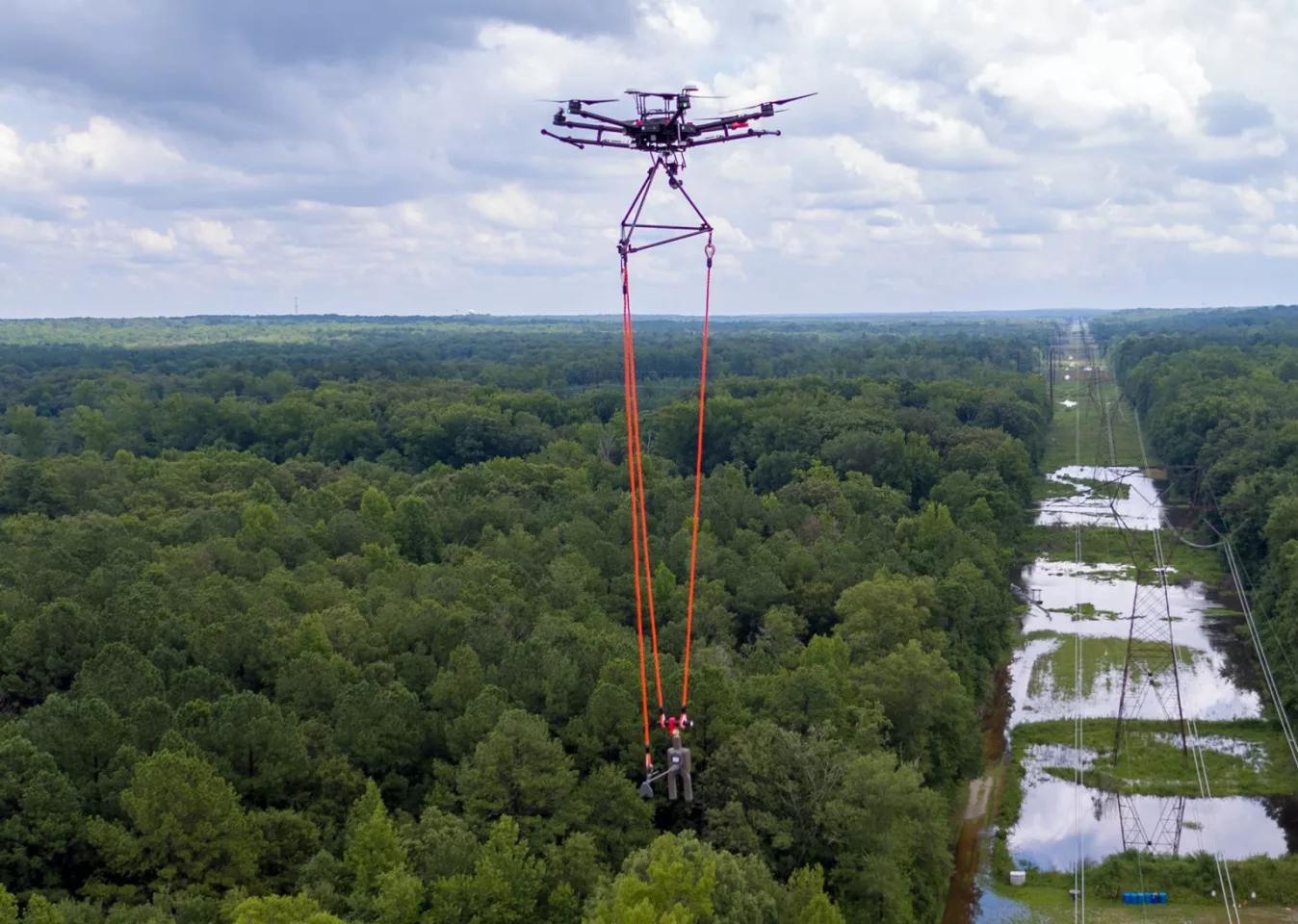Live power lines are traditionally inspected by workers who have to climb poles, stand in bucket lifts, or ride in helicopters. A new system promises to make such inspections quicker, easier and safer, by allowing a drone to do the job.
There actually already are some drone-based power line inspection systems, although the lines themselves usually can't be directly touched by any drone-mounted tools during the inspection process. If the drones got close enough to do so, they could get tangled in the lines, possibly even cutting through them. It's also conceivable that electromagnetic fields emitted by the lines might adversely affect the drones, causing them to lose contact with their operators.
That's where the Osprey Nonconductive Payload System (NPS) is designed to come in.
Manufactured by Virginia-based drone tech company Linebird, it's compatible with existing industrial multicopter drones that are capable of lifting a payload of at least 5 lb (2.3 kg) – suggested models include the DJI Matrice 600 Pro, the Freefly Systems Alta X, and the Inspired Flight IF1200.

The system itself consists of a stabilizing triangular frame that's attached to the undercarriage of the drone, three non-conductive cables that hang down from the corners of that frame, and an Ohmstik lineman's tool that's attached to the bottom ends of those cables. As the drone flies along the length of a live power line, the Ohmstik can regularly be lowered into direct contact with splices or other potentially faulty connections within it, checking their electrical resistance.
A release mechanism allows the system to be jettisoned if the drone experiences problems, or simply when it's coming in for a landing.
The Osprey NPS should be available soon, via the Linebird website. It can be seen in use, in the video below.
And for another example of alternative power line inspection technology, check out the LineRanger robot. It's a rubber-roller-equipped device that scoots along the lines after being mounted directly onto them.
Source: Linebird





